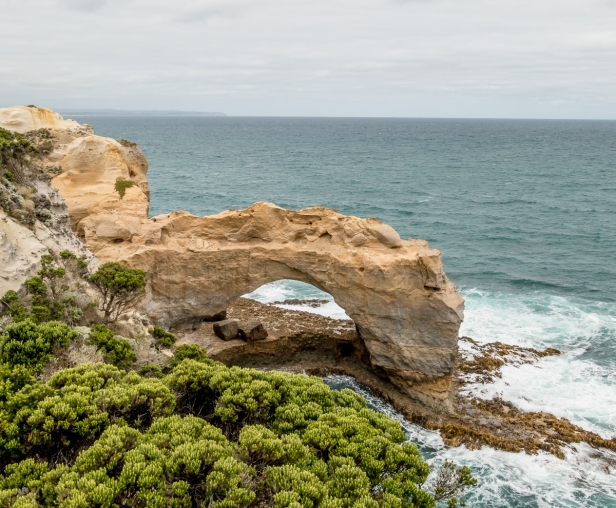
On a map of the road out to the Otway Lighthouse the motel owner draws a big circle about half way along the road and tells us there are koalas there. I’m thrilled and excited, and driving out there immediately goes to the top of the list of things I want to do in the area. I was born and raised in Australia and have seen koalas many times: as a child in an enclosure at a wildlife sanctuary near Melbourne, as a teenager at another sanctuary near Canberra, at the zoo in Sydney, and at a reserve near Cairns where Don got to hold one. But I’ve never seen them in the wild, in their natural state, and I’m excited to get the chance. At the same time I’m skeptical. Koalas are small. Gum trees are big and leafy. How are we ever going to find them?
Don is driving. Slowly. I’m leaning forward peering through the windows from side to side hoping to spot a koala in the trees. How could it be possible? Should we stop somewhere and walk into the forest to try to find them? Then suddenly up ahead we see a car stopped by the side of the road and a small group of people staring upwards. Of course we stop and join them, and there they are: two koalas in the branches of a gum tree right by the road. And a little further along are two more. And not high up or hidden at all. They are unconcerned by us, and are simply doing what koalas do: moving around in the trees, eating the leaves,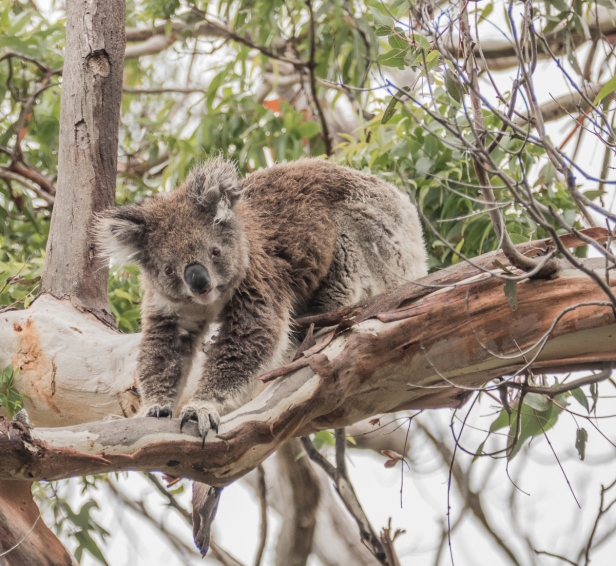
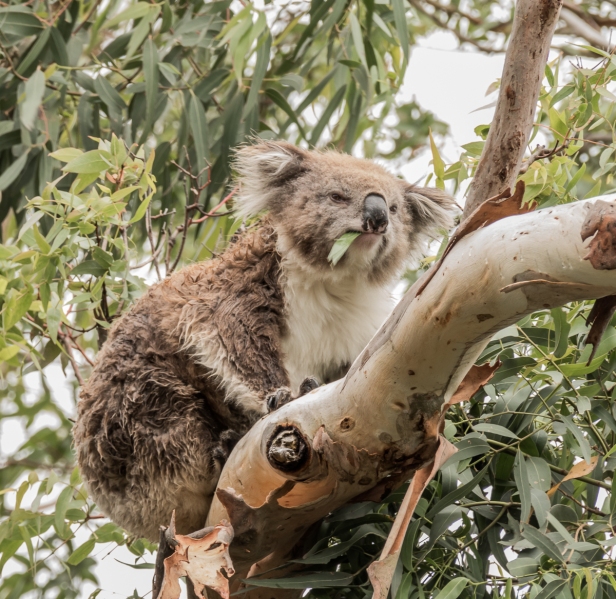
or sleeping.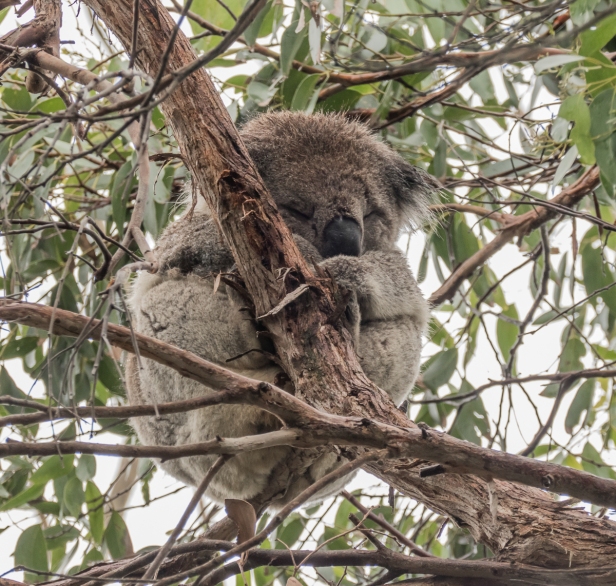
This one is a baby and half the size of the others, not much bigger than a child’s teddy bear. Adults weigh in at about 12kg.
Koalas are fussy eaters. There are over 600 species of eucalyptus trees and koalas prefer the leaves of only 30 them. Wherever these particular species grow you will find koalas and one of the greatest threats to them is loss of habitat.
We continue on out to the old Otway Lighthouse, which is no longer in use except as a tourist attraction, and on the way back stop again and see four more koalas, all of them close by the road and low in the trees. Eight in one day! I never thought I’d get to see koalas in the wild, though I do know of people who live in rural areas and see them frequently. For Don and me it is an extraordinary and exotic experience. Real koalas! In the wild!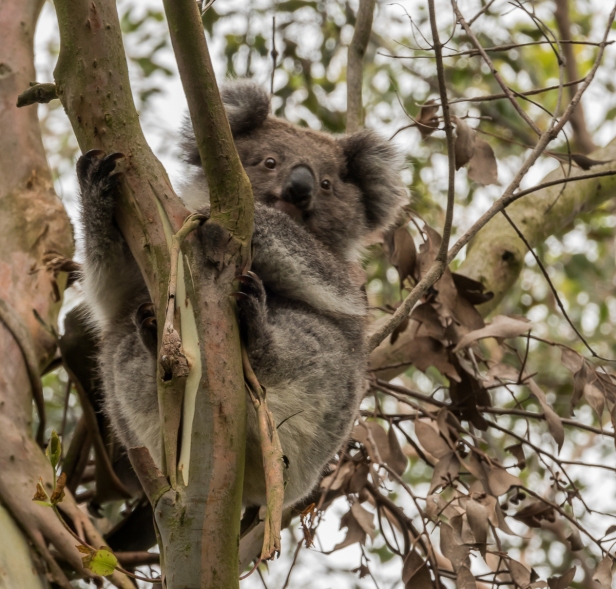
Next on the list? Wombats! Except that will require a middle-of-the-night excursion somewhere in the dryer southern part of the country.
After visiting the lighthouse we drive inland through the Great Otway National Park, regretting that the weather does not entice us to hiking – in other words it is bucketing down rain most of the time, but we do see some pretty scenery.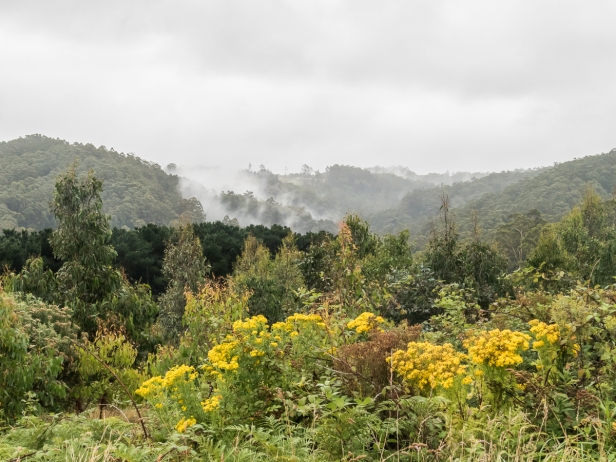

In March 1878 a ship left England with a crew of seventeen, a mixed cargo of linen, pianos, candles, clocks, porcelain, pipes, perfumes and umbrellas, as well as cement, railway irons, lead and copper, and thirty-seven passengers, all bound for the prosperous city of Melbourne. The Loch Ard was under the command of one Captain Gibbs, twenty-nine years old and recently married. Three months later it ran aground on a reef off Muttonbird Island off the south coast of the State of Victoria.
The fog was so thick that the lighthouse signal could not be seen, the very same Otway Lighthouse we had visited. The captain could not tell how close the ship was drifting towards the coast. When the fog lifted sails were hoisted as quickly as possible to try to steer the ship away from land, then anchors were dropped 50 fathoms deep to try to hold the ship off the rugged cliffs. All to no avail. In a rough savage sea the ship struck the reef with such force that the masts came crashing down, killing several people in the process and making the proper deployment of life rafts impossible. The ship sank within about fifteen minutes.
There were two survivors. A young apprentice, Tom Pearce, survived by clinging to the underside of an upturned life raft and was eventually washed ashore on the incoming tide at a place that is now known as Loch Ard Gorge. He heard the cries of Eva Carmichael who had been clinging to a spar for hours, and swam out to rescue her. He revived her by opening a case of brandy that had washed up on the beach, and then went for help. She lost her entire family to the sea.
Loch Ard Gorge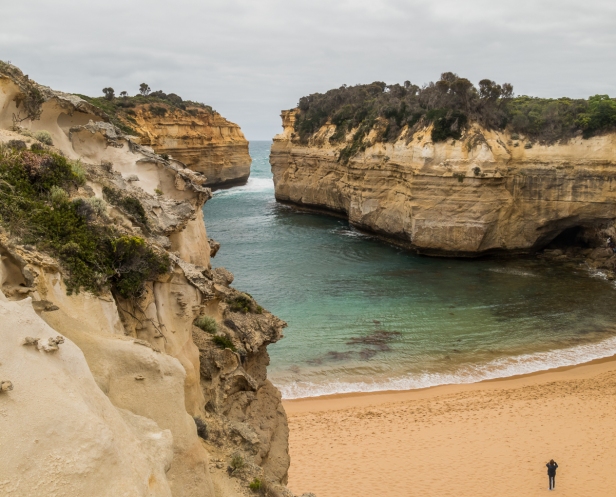
This is but one story of hundreds of ships sunk on the Shipwreck Coast, that section of coast from Cape Otway west to Port Fairy on the south coast of Australia. Approximately 800 ships have been shipwrecked since 1797 although less than 250 have been discovered. All those ships. All that cargo. All those people. Hundreds of them. Bound for a new life in Australia only to die when they were nearly there. Sailors feared that coast. And with good reason.
Our own visit to the Shipwreck Coast was comparatively uneventful, but then we were on land, not on the surging water.
The Great Ocean Road begins peacefully enough at Torquay, and winds its way to Anglesea, both popular holiday destinations.
From there, heading west, like all coastal roads it twists and turns,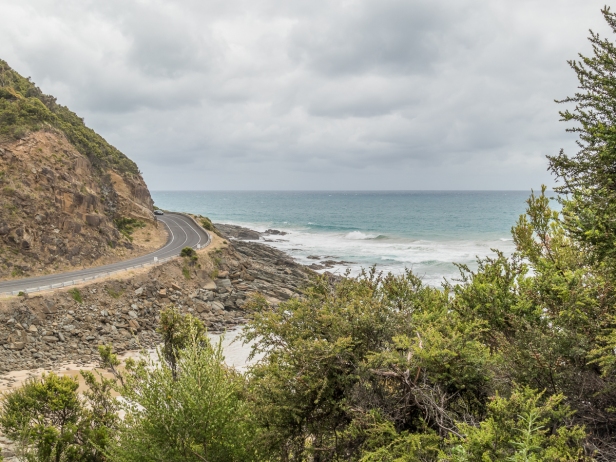
until you reach Cape Otway. From then on the coast becomes more and more treacherous.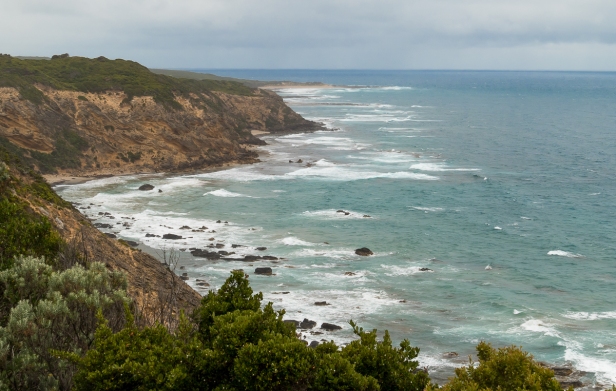
The first real sign of just how wild this coast is comes with the iconic Twelve Apostles. It was originally known as The Sow and Piglets, but in 1922 it was renamed for tourism purposes. So much more appealing, The Twelve Apostles, despite the fact that there have only ever been nine of them. 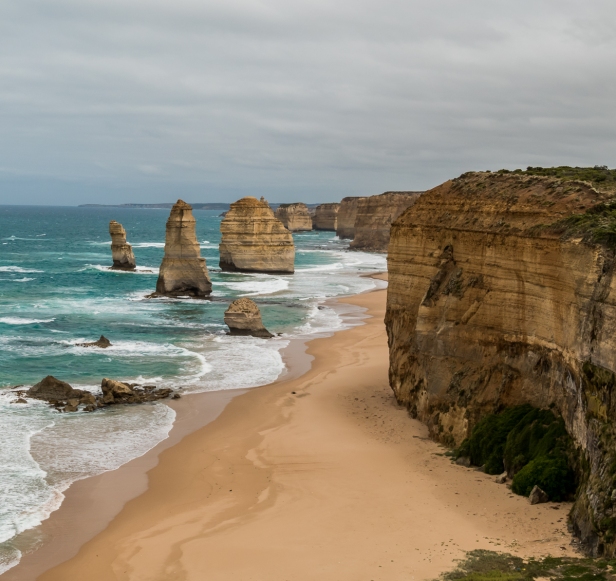
We didn’t understand why The Twelve Apostles gets all the good press. Heading west from there as far as Peterborough the coast is continually as harsh, craggy, rugged and beautiful. We were not surprised to hear of so many shipwrecks.
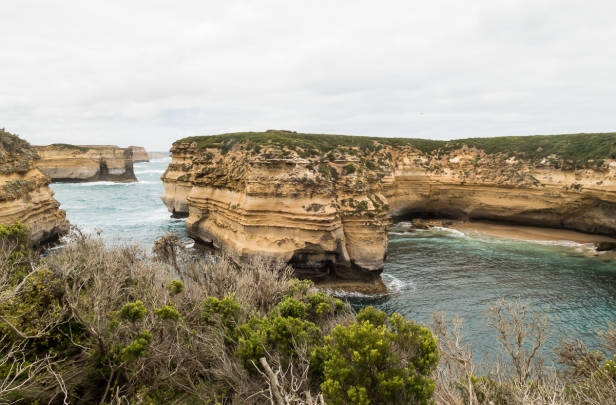
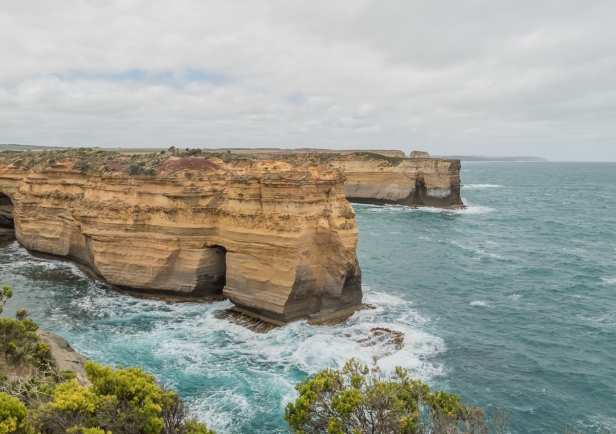

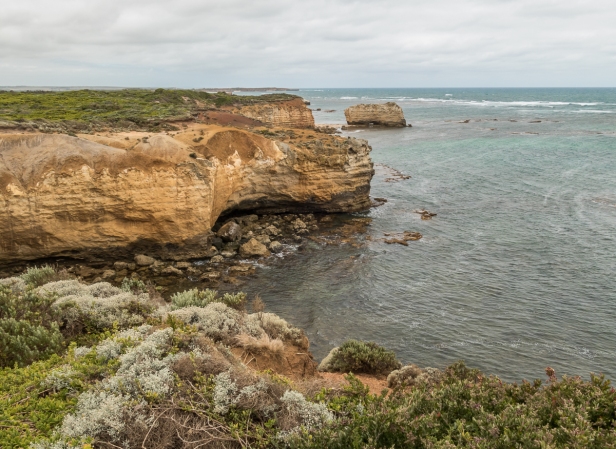

East of Cape Otway the coast is dotted with many small beaches. We stayed in the village of Marengo, and from there walked along the beach
to the rock shelf revealed at low tide.

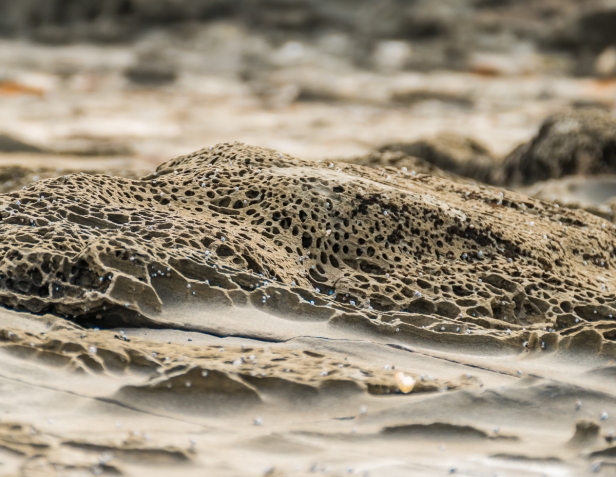
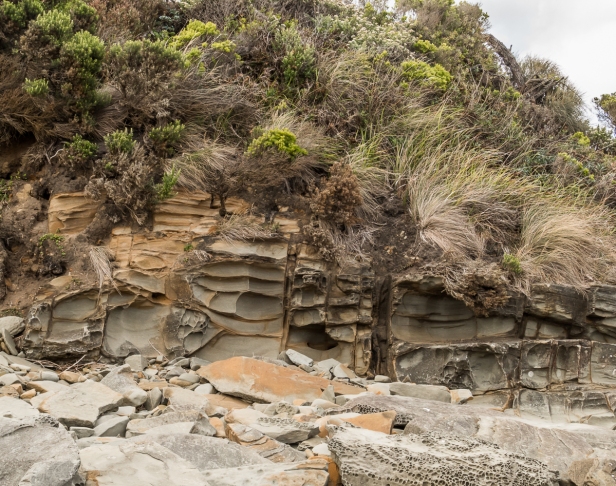
Up the road in Apollo Bay, a flowering gum. It had been so long since I’d seen one in full flower I had to go right up close to it to be sure that a tree with such an abundance of brilliant, crimson flowers was actually a eucalyptus tree.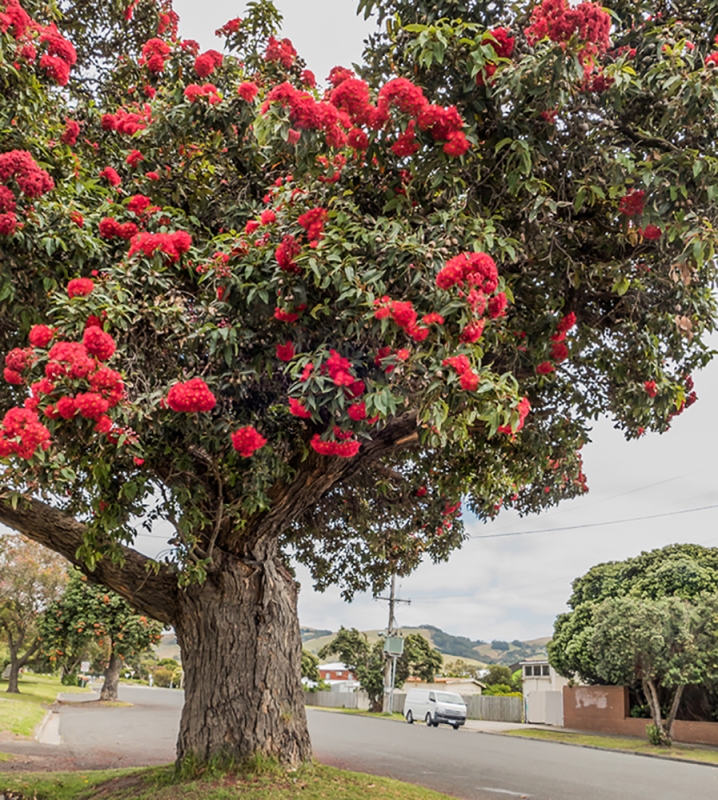

To illustrate the enormous variety within the botanical family, this also is a eucalyptus tree, known, unsurprisingly as a stringy-bark.
On returning from our excursion to the Great Ocean Road we reunited with the family and went to the beach for a week. Next post: Guerilla Bay, Batemans Bay, Mossey Point, and Broulee – some of the many fabulous beaches on the coast east of Canberra. And giraffes and meerkats at Mogo Zoo.
All words and images by Alison Louise Armstrong unless otherwise noted
© Alison Louise Armstrong and Adventures in Wonderland – a pilgrimage of the heart, 2010-2015.
http://blog.grayline.com.au/history-loch-ard-shipwreck/

I’d be so excited to see a koala also. Love those photos and the gorgeous coastline. Lucky ya’ll. ❤
LikeLike
Thanks so much Paulette. It was a total thrill to see those koalas. And yes, we’re very lucky.
Alison
LikeLike
Loved the koalas in the wild! We, too, have only seen them in (for lack of better words) koala parks in Australia. These look just as groggy and lazy as those did! So cute, though. I also loved the low-tide close-ups; the sand patterns are as intricate as lace! I love low tide pools and their aftermath, and you captured them beautifully.
LikeLike
Thanks so much lex. It was amazing to see the koalas, and yes very cute. I took quite a few pics of the sea reaching the sand on this trip – something about the soft simplicity of it captured me. (I think there’ll be another in the next post). And we love wandering the low tide rock shelves – There’s so much there you wouldn’t otherwise see – all those beautiful patterns.
Alison
LikeLiked by 1 person
Beautiful landscape!
LikeLike
Thanks Kay. Isn’t it fabulous?! We loved it.
Ali
LikeLike
What an amazing coast!
LikeLike
Isn’t it?! Every corner we turned there was more to see – all of it stunning
Alison
LikeLike
Absolutely wonderful as always, Alison. Such beautiful photos.
LikeLike
Thanks so much Roz, glad you enjoyed it.
Alison
LikeLike
Koalas close up…what a treat. I have seen them in the wild, but they were really high in the tree, barely visible. And disappointing. So I have to return to OZ to see them up close. But that’s my life—I have to do everything twice. Your photos are all spectacular, as usual. I love the first one. And the one of Loch Ard (with the person in foreground). And the pastel-ish (!!!) one of…is it Anglesea? Is Don still doing Pilates? Have you tried yoga…it works on everything, including the core.
LikeLike
Yoga shmoga – Pilates rules!
LikeLiked by 1 person
Pilates pilots. Pilates pull ladies. Pilates pall lattes. You know pilates was taken from yoga poses, right? Everything was taken from yoga poses: standing–tree pose. Sitting–lotus pose. Sex–cat pose. Putting socks on–forward bend. Paying income tax–downward dog with feet spread.
LikeLiked by 1 person
Chuckle, chuckle.
LikeLiked by 1 person
You are a funny person badfish 🙂
LikeLiked by 1 person
I’m thinking of abandoning my blog and just commenting on other people’s blogs. It’s way more fun. The down dog was like genius, eh?
LikeLike
Yes, genius. Jealous 🙂
LikeLiked by 1 person
Thanks badfish. It really was a treat, so yes you’d better come back to Oz to see them. You’ve picked some of my fave photos too, esp Loch Ard Gorge – I think the person makes it that much more powerful, and the one of Anglesea – I love the softness of it. I’d like to be able to do more of that pastelish look and yet still have some sense of depth. It can be tricky I’m discovering.
Alison
LikeLiked by 1 person
Yeah, back to Oz. A hard life, but someone has to live it, eh? And not only for koalas. I want to take that train all the way across the southern part of Oz. And who wouldn’t want to see a place called Coober Pedy? How do you get the pastels? Do you start with a photo under lighted or saturated?
LikeLike
I’ve never been to Coober Pedy tho it intrigues me. I’d love to see inside some of those underground homes. Done that train trip twice – honestly the endless scrubby desert gets boring mighty quick.
Pastels – um, not sure. The one above was taken on a grey day and that helps a lot. Don’t think it’s possible in bright sunlight. Then I just don’t punch things up too much in LR. Still experimenting and it’s only suitable for some photos I think.
Alison
LikeLiked by 1 person
Coober Pedy, or not going to Coober Pedy is one of my huge disappointments in life, or traveling. Who wouldn’t go to a place called Coober freakin Pedy for pedy’s sake. I saw the sign for it when I traveled that route on the Ghan from Alic Springs (first class!…but when it was not so expensive, Don told me what it costs now, I would not have paid that much).
LikeLike
i’m happy to have had this
beautiful koala holiday
of words & colorful images 🙂
LikeLike
And I am delighted
to share with you
our koala and coast
holiday journey ❤
koalas rule!
Alison
LikeLiked by 1 person
Great Pics Alison
LikeLike
Thanks so much Carlton.
Alison
LikeLike
Aren’t they just the cutest things! The more I read about your adventures in Australia, the higher it goes on my list of places to visit. The Shipwreck Coast looks amazing. Beautifully written post. Thanks!
LikeLike
Thanks so much Caroline. Australia is definitely worth a visit – much to see and do here, and an endless variety of fabulous scenery.
Alison
LikeLike
Gorgeous photos, Alison! And wonderful that you saw koalas in the wild!
LikeLike
Thanks Kelly. Seeing the koalas was magical! I love when we run into such unexpected delights.
Alison
LikeLiked by 1 person
Baby koala asleep in a tree = cutest.photo.ever 🙂
LikeLike
Thanks 🙂
And I agree. Couldn’t believe it when I saw it. And it didn’t move, at all, in all the half hour or so we were there. Amazing it doesn’t fall off – balanced on one thin branch. Think I had better put it on FB 🙂
Alison
LikeLike
What outstanding scenery. The opening photo of the arched rock was splendid and then there were more. Fine job with the camera Alison. Thanks for the updates. It is nice to be traveling with you.
LikeLike
Thanks so much Ron. So glad you’re enjoying our journey. Lots to photograph here!
Alison
LikeLike
Wow… spectacular scenery! especially the Twelve Apostles. I have to talk to my husband to do this once we are in Australia again. Have you been there in winter? how’s the water during that period? will it be wilder?
LikeLike
Thanks Nina. Isn’t the scenery fabulous! We haven’t been in winter, but I imagine it would be much wilder then. We were there late summer, though as you can see it wasn’t all that sunny.
Alison
LikeLiked by 1 person
That’s an amazing coast. Great history in the blog. I love reading about places and the history about them.
LikeLike
Thank you so much. I’m glad you enjoyed the post. I was very interested in that story of the Loch Ard. I really had no idea until we got down there just how much tragedy there had been on that coast.
Alison
LikeLike
Would it be okay if I post a photo, a short story about you and this place and links back to your blog? I am doing a recurring blog topic where I pick 10 blogs from a particular region. Here is the Asian blogger post that I did last month – http://theworldisnotthatbig.com/2015/04/28/great-blogs-and-places-to-dream-about-asia-edition/
LikeLike
Wow, thank you. I’d be delighted to be included. I loved your Asian blogger post – so much good info and links there. Thank you.
Alison
LikeLike
A really interesting post, well written!
LikeLike
Thank you so much Chris, glad you enjoyed it.
Alison
LikeLiked by 1 person
Gorgeous! Those koalas are too cute and that rock shelf is quite something.
LikeLike
Thanks Carissa. We loved the koalas – I guess that’s obvious 🙂
I was taken with all the patterns on the rock shelf – so much simple beauty. And a great curiosity as to what/how those sand patterns were formed, and the equally intriguing rock formations.
Alison
LikeLiked by 1 person
While all the photos are, as usual, stunning, the photo of Loch Ard Gorge and the one of the arch that opens right onto the inlet are my very favorites. Even in your pictures, the mystery and adventure of these two spots is palpable.
LikeLike
Thanks Felicity. Loch Ard Gorge is amazing, and so beautiful. We could walk right down to the beach. Same with the arch. Most places we could just look down or along the coast but those two places we could climb down.
Alison
LikeLike
Great post – you have been busy. Unfortunate about the weather as the walks along that stretch of coast can be spectacular. If you want to see wombats I know where I can almost guarantee a sighting of wild wombat – near Wee Jasper not far from Canberra. They are abundant and almost a pest as they make huge excavations, sometimes under house foundations, with unfortunate results. Love your photos of details on the rocky shore. The Cape Otway koalas are famous – unfortunately they are an isolated population and are overpopulating that isolated fragment of habitat. There is, I understand, some controversy as to what should be done.
LikeLike
Thanks Helen. We did get to walk along the coast a bit, it was the inland walks in the national park that were rained out. I know Wee Jasper – maybe we’ll head out there when we get back to Canberra. I know people who live near Burra who have great problems with wombats constantly digging up their garden.
There was much to notice and photograph on that rock shelf – loved the wormy sand patterns and really interesting rock formations.
Didn’t know that about the Cape Otway koalas. It would be great if they could move some to another less populated place, but I have no idea how that would work.
Alison
LikeLike
BTW – love Mullumbimby and the Byron region. Fond memories.
LikeLike
It’s beautiful here. We’ve been here before, have friends in Mullum and Byron so having a lovely time.
LikeLike
That scenery!! ❤
LikeLike
Isn’t it fabulous! Breathtaking.
Alison ❤
LikeLiked by 1 person
Wow…what great pictures! I’m so intrigued by the ship wrecks. I’d be forever searching for treasure and remnants if I were there. I just love your journey! xx..Cortneybre…
LikeLike
Thanks so much Cortneybre. It was a wonderful place to photograph. I think many people have been there searching for treasure. Probably it still attracts divers – there are all those wrecks that haven’t been found yet! Must be some amazing stuff at the bottom of the ocean.
Alison
LikeLiked by 1 person
Those adorable koala pictures and images of Twelve Apostles are awesome. Must put this destination on my bucket list. Thanks for taking us along on your magical journey through this beautiful land!
LikeLike
Thanks Helga, and yes you must put it on the bucket list. It’s definitely worth visiting. Glad you’re enjoying the journey!
Alison
LikeLike
Absolutely fascinating story and wonderful photography. Thanks for the tour.
LikeLike
Thank you so much Marsha, and you’re welcome! Glad you enjoyed the tour.
Alison
LikeLike
Absolutely stunning photos! Paintings! Both abstract and representational! I loved this post!
LikeLike
Thank you so much Jo, so glad you enjoyed them. There was so much beauty to photograph there.
Alison
LikeLike
The second koala photo has as much nuance as the Mona Lisa. (I may, at times, go to extremes to make a point.) The first time i looked at it, I cracked up, because I thought of a brilliant, brazenly-groomed Einsteinian wizard munching on a tree leaf with the squinty-eyed pleasure of a cat having the back of its ears stroked. Then I looked again, and it looks as though the koala (he or she?) was looking right into you, through the camera, at the moment of the photograph. And there’s a lovely open-ended glimpse of apprehension in those eyes.
And I loved the smoky ridges glimpsed through the rain…
Michael
LikeLike
I love the way you look so deeply into photographs. I like brazenly-groomed Einsteinian wizard very much – what a description. I watched him/her eating for a long time. Such contentment.
Also those ridges! We’d been driving through a forest in the rain and then we came out into the open, and the rain slowed, and there was that splash of yellow of the flowers! Just lovely.
Alison
LikeLiked by 1 person
Fantastic photos, as always! I envy your koala encounter, thanks for taking us along. Is the flowering gum with the red blooms the same species (or related) as the “New Zealand Christmas Tree” that we saw in abundance there? In January, most had dropped the majority of their hair-like blossoms, leaving crimson pools on the ground.
LikeLike
Thanks Silk. The koala encounter was just magical! We felt really lucky.
The New Zealand Christmas tree is a myrtle, so not related.
Alison
LikeLike
So strange- that coastline looks so familiar to me! From the Algarve, of course, but no Koalas ( (: ) They have such grumpy expressions! Wonderful 🙂 Happy Easter to you both!
LikeLike
Happy Easter to you too! I’d like to visit the Algarve, heard many wonderful things about that part of the world, including that hostels in Portugal are fabulous.
Seeing the koalas was really special – we felt very lucky.
Alison
LikeLiked by 1 person
The Great Ocean Road is one of my favourite parts in Australia. So so beautiful! It’s pretty amazing seeing koalas in the wild, isn’t it? Where did you see them? Was it at Kenneth River? Anyway, beautiful photos!!
LikeLike
Thanks San. It is beautiful in this part of the country – so glad we made the trip. The koalas were on the road from the Great Ocean Road out to Otway Lighthouse, right by the road. It was really magical to see them.
Alison
LikeLike
Beautiful landscape and love the adorable koalas!
LikeLike
Yes, I do agree, about both statements! We felt so lucky to see the koalas up so close, and the landscape there is quite wonderful – a feast for the eyes.
Alison
LikeLiked by 1 person
What a thrilling coastal scenery, I really hope I get to live in Australia some time (I feel a visit/vacation would be too short to truly experience it!). Your pictures are showing it from its best side! And the koalas are just adorable!
LikeLike
Thank you so much Inger. Australia is a beautiful country, and yes, you could never see it all in a visit, there are so many wonderful places to go to and they are very far apart. Maybe you will get to live here one day for a while. And see koalas for yourself!
Alison
LikeLiked by 1 person
Australia is high on my wish list, I am hoping work will take me there some day. And I would be so grateful to see koalas in the wild.
LikeLike
Those koala pics are beautiful, well, as are all the other photos. Must have been a treat. I’m just imagining the captains of those ships who wandered into those waters and were shaking about every turn because you can’t tell what’s under water. Such mystery lies under those waters and so many stories. Next time we’re in Australia, we’ll definitely book a day or two to check out these places. Last time we didn’t have a proper gps appso we ended up driving in circles until we reached Rutherglen and then didn’t have enough time to finish the journey to the Shipwreck coast. Looking forward to finishing it finally this summer.
LikeLike
Thanks so much. Yes it really was a treat. And you’re right, those waters are full of stories. Too bad you didn’t make it down there, so you’ll just have to come back 🙂
My sister had lent us her gps so we had no trouble, and we now have gps on the phone which is okay but nearly as good as a proper gps system. Still, so far, it gets us where we want to go.
Alison
LikeLike
The wild life in Australia is just amazing, to see a Koala in the wild? I would love that. The Shipwreck coast looks beautiful and rugged, but it is sad to think of so many people who lost everything in these treacherous waters. Fascinating and sad stories.
LikeLike
We love the wildlife here – even though I was born and lived here for many years I still find it completely exotic and fascinating.
It was wonderful to finally get to see the Great Ocean Road and the Twelve Apostles and that wild coast. I never knew it was known as the shipwreck coast until we got down there. Yes, many tragedies there, many sad stories.
Alison
LikeLike
This is so spectacular Alison both the locale, the koalas and your photos! I want to visit!
LikeLike
Thanks so much Cindy. Seeing the koalas was a real highlight for us, and the spectacular coast.
Alison
LikeLike
Oh the landscape! So very beautiful! And then the bonus of those cute little Koalas! Lucky, lucky you 🙂
LikeLike
Yes, we are very lucky. We were awed by the landscape, and heart-melted by the koalas. They really are incredibly cute.
Alison
LikeLike